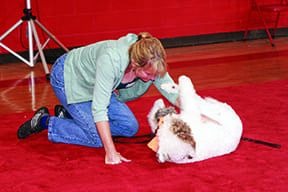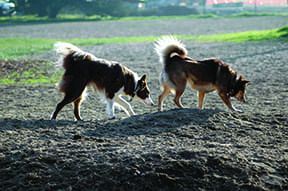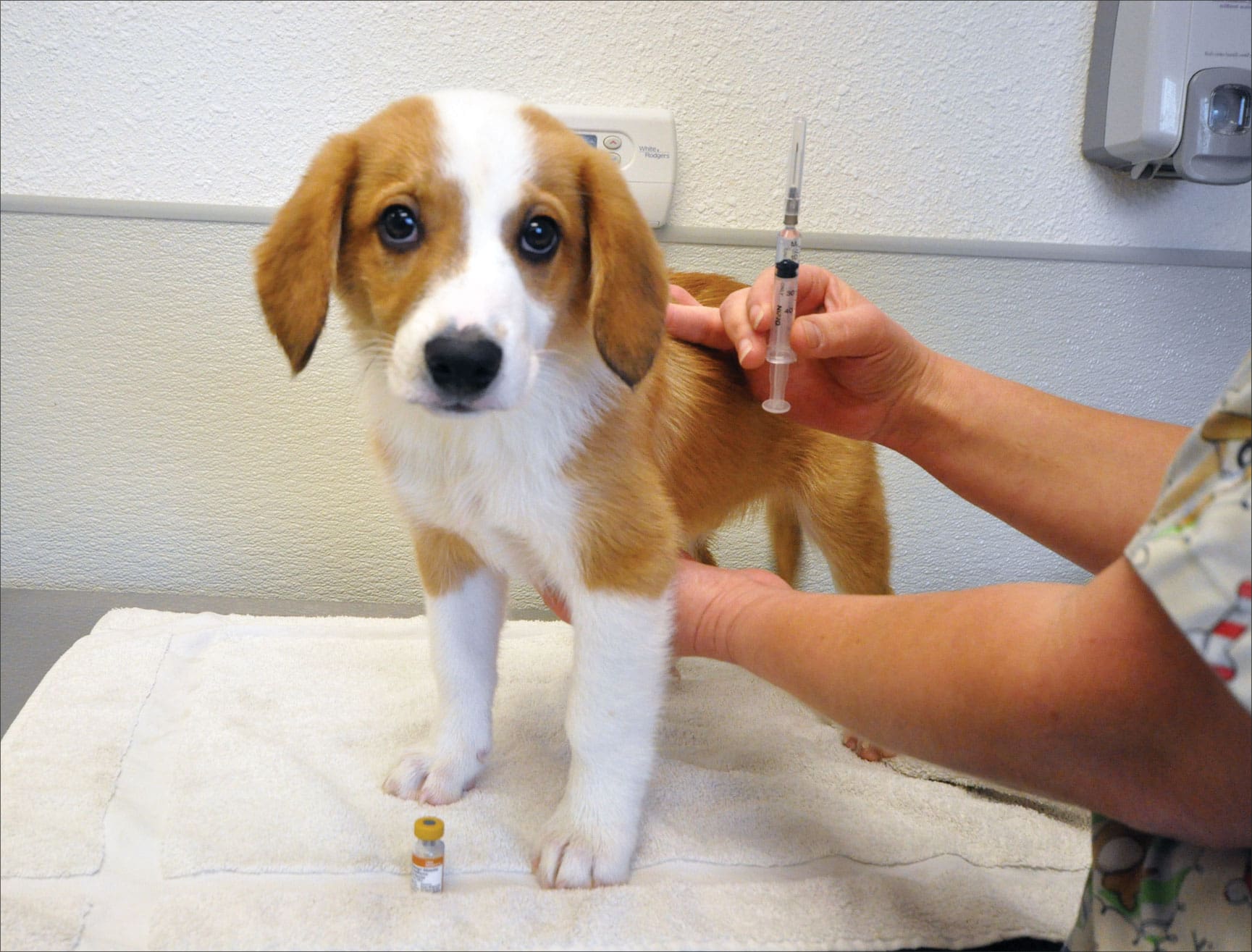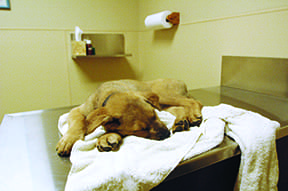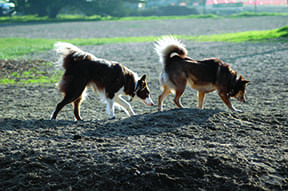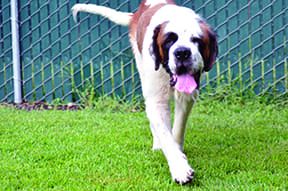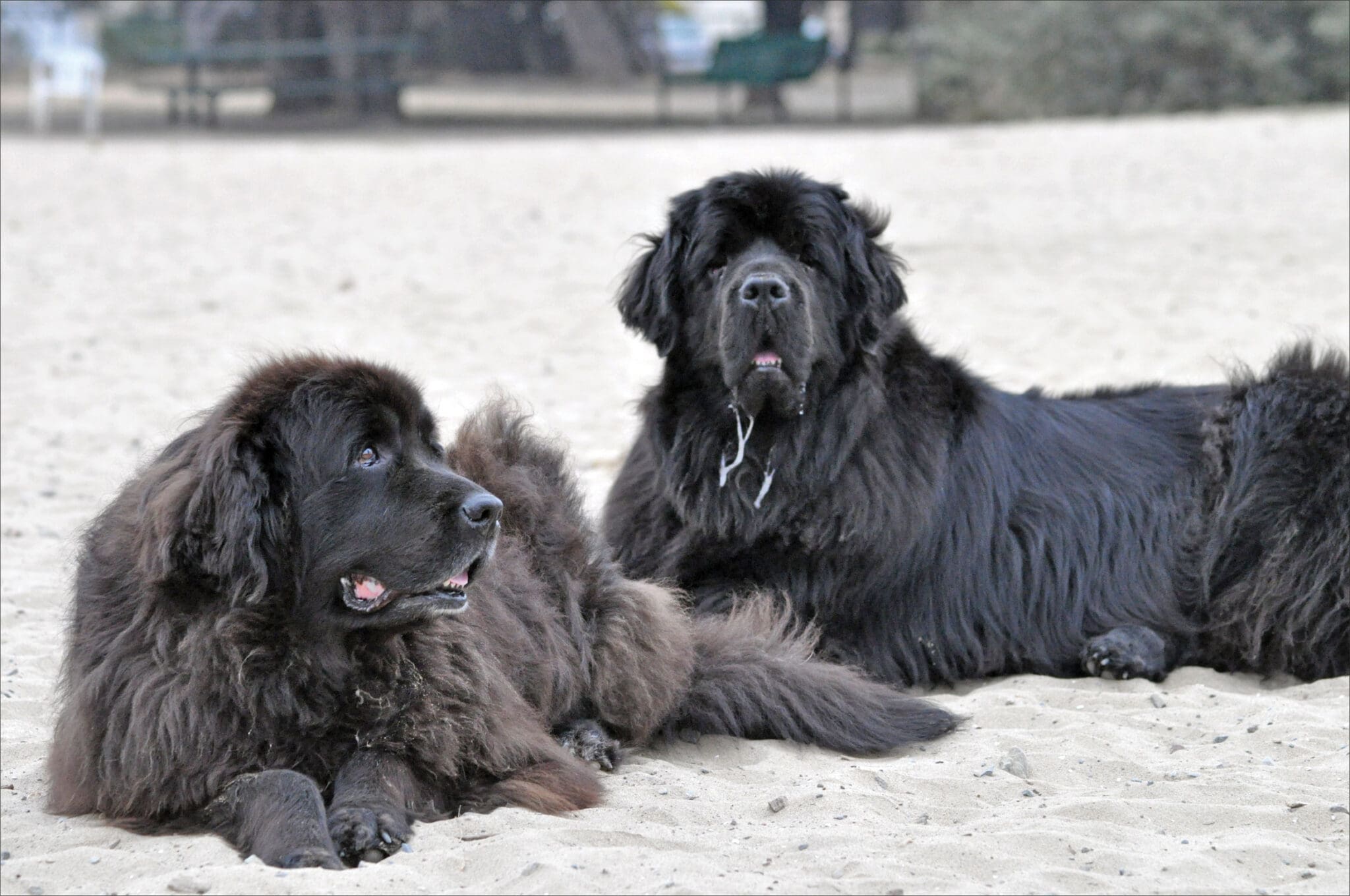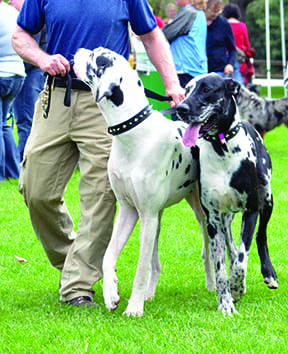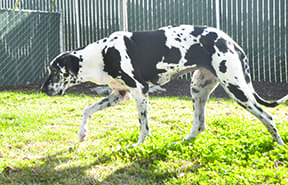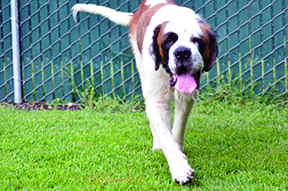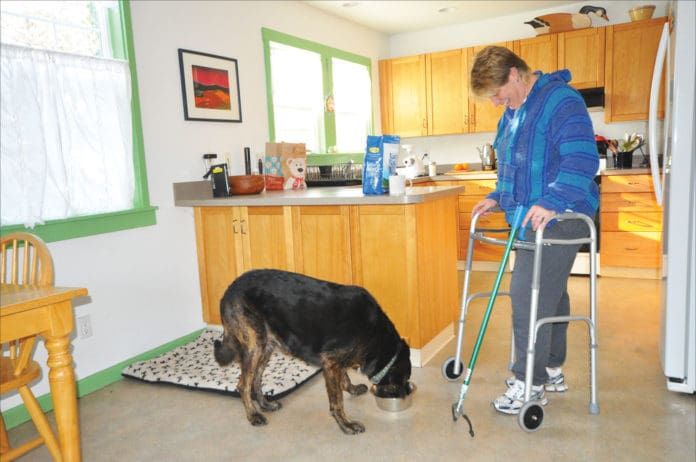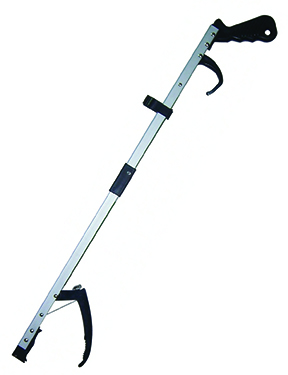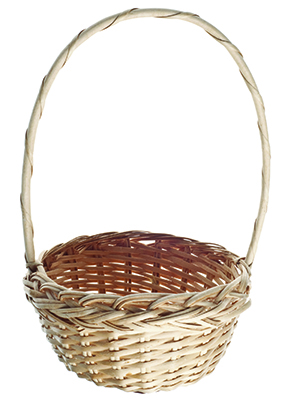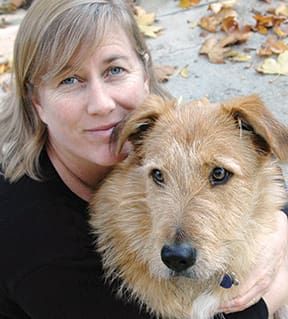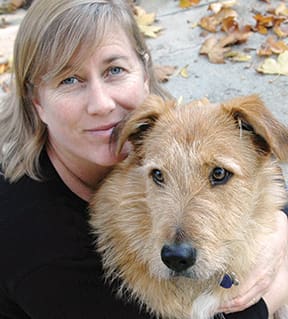The team glides across the obedience ring with the precision of Olympic synchronized swimmers. As the handler strides into the 180-degree about turn, the dog remains in perfect heel position. There’s an obedience title at stake, and so far, the team is on-course to qualify. And then it happens: the dog misses an exercise. The team has just been disqualified. There are two extreme alternate endings to this scenario.
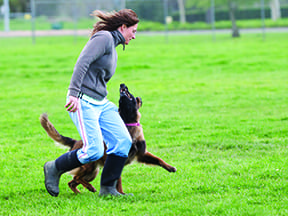
288
In the first – and sadly, more common scenario – the frustrated handler barks out a second command, determined not to let her dog “get away with” failing to perform correctly in the ring. The dog yawns (a sign of stress) while slowly executing the behavior. When their turn is over, the handler hurriedly exits the ring, immediately strategizing with ringside friends and her trainer about how best to set the dog up for a future training correction in an effort to make sure that mistake doesn’t happen again.
In a happier ending, the handler accepts the disqualification with a rueful laugh; it’s disappointing, but not the end of the world. She jogs with her dog toward the out-gate, gives the dog one more cue for a simple behavior, and when he performs it promptly, quickly and brightly rewards him with some sincerely affectionate petting and praise as she looks for a good place to watch the rest of the class.
While it’s distressing to witness the former scene, it’s not only an absolute pleasure to witness the latter, but also an example of what competitive obedience is supposed to look like.
According to the American Kennel Club, the origin of competition obedience traces back to 1933 when Helen Whitehouse Walker, who bred Standard Poodles, wanted a tangible way to show others that her dogs were more than a pretty face in a fancy haircut. Borrowing ideas from England’s Associated Sheep, Police and Army Dog Society, she gathered the support of area dog clubs and fellow breeders and devised a “test” comprised of on- and off-leash heeling, stays, drop-on-recall and retrieving.
Eight dogs entered the first obedience trial, but enthusiasm grew quickly, prompting Walker to contact the American Kennel Club. She emphasized the importance of owners developing a deeper relationship with their dogs, and stressed that while accuracy and precision should be sought after, a dog’s performance should demonstrate “enjoyment and willingness to work.” These details remain in today’s regulations.
According to the AKC, obedience is open to “anyone who is interested in developing a meaningful relationship with their dog based on communication and fun,” and the organization explains that obedience trial participants will “take pleasure in [their] new hobby for many years to come.”
But often it’s tough to consistently find exhibitors who train in ways that appear to fully embody that sentiment, largely due to the continued prevalence of compulsion-based techniques with ties to early military dog training. Stand outside an obedience ring at a trial, and you’re likely to spot a number of dog and handler teams whose lackluster or even robotic performances seem to lack the element of true enjoyment. Some handlers look so sullen, an observer may wonder if they even like their dogs. This does not speak to the intended purpose of competition obedience.
Over the years, competition obedience has become a lot “kinder” to the dogs (using less compulsion), but do exhibitors truly emphasize the development of “meaningful relationships” that are based on “communication and fun?” And does “kinder” training mean “better” training? The use of food in training – either as a lure to induce behavior or as a reward following a successful behavior – is largely what many define as being “positive,” yet it’s not uncommon to find a trainer working a dog with both leash and collar (choke, pinch, or e-collar) corrections and food rewards.
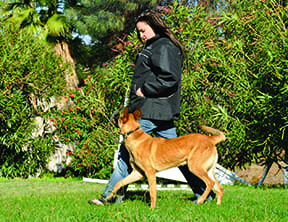
fortheloveofdogphoto.com
288
Today, with an increase in the number of trainers who utilize positive reinforcement training methods, more handlers are putting a greater emphasis on the relationship aspect of training.
CHALLENGES UNIQUE TO OBEDIENCE
In order to succeed in the obedience ring, a dog has to perform a series of behaviors with precision, in response to a single cue and/or signal from his handler – but he also has to perform the required behaviors in a natural, smooth manner.
The “Purpose” section of the AKC’s obedience regulations states that it’s “essential that the dog demonstrate willingness and enjoyment while he is working, and that a smooth and natural handler be given precedence over a handler moving with military precision and using harsh commands.” The “standard of perfection” for the sport is described as combining “the utmost in willingness, enjoyment, and precision on the part of the dog with naturalness, gentleness, and smoothness on the part of the handler.” A lack of willingness and enjoyment on the part of the dog is supposed to be penalized, as should a lack of precision in the dog’s performance, roughness in handling, military precision, or harsh commands by the handler. Handlers who carry or offer food in the ring or discipline or abuse their dogs in the ring receive a non-qualifying score.
The use of food, toys, and praise is essential to building new behaviors – and maintaining those behaviors over time. But in order to get a dog ring-ready for obedience, you have to reduce and then completely fade the use of food treats and other rewards, without any loss of the dog’s enthusiasm or compliance. How?
The short answer is by making the act of working with you so enjoyable that it becomes a reward in itself. But this is the exact point at which many owners (and trainers!) struggle: when they try to make the leap from using a lot of treats to using none, without finding and cultivating ways to keep the work itself engaging and rewarding for the dog. Failure at this phase often drives owners and trainers back to punishment-based techniques.
PHILOSOPHICAL DIFFERENCE
People who use only reward-based methods to train their obedience competitors say that making the commitment to forego the use of force- or fear-based tactics is an important part of the training process. “I think the important question to ask is, ‘At the end of the day, does the dog have a choice?’” says Denise Fenzi, a trainer and successful exhibitor from Woodside, California. “That’s huge! Because, philosophically, if at the end of the day the dog has a choice, you have no choice but to find ways to make the work interesting for the dog.”
It’s an important point. No matter how you train, when you step into the ring and can’t use training corrections – or rewards – the dog is free to make a variety of performance choices without immediate consequences (good or bad) from the handler. However, many people are still reluctant to let go of the idea that the dog “has to do it.” This mindset stands as a major cultural roadblock toward achieving Fenzi’s idea of positive training.
Fenzi is quick to acknowledge that, thankfully, when it comes to methods that differ from hers, she doesn’t often see people using methods that inflict pain on their dogs. “It’s more like annoyance,” she says. “If I take you by your shirt and drag you around, I’m not hurting you, I’m irritating you; I’m making you not want to be with me, and I’m not doing anything for our relationship. Most of the obedience I see is a combination of really uninspired training. Giving a dog a cookie does not create inspiration. Dragging you to dessert doesn’t take away from the fact that I dragged you there.”
In contrast, she says, “If a person takes responsibility for making the work interesting and truly believes that the dog has a choice, that person would qualify in my mind as a positive trainer.”
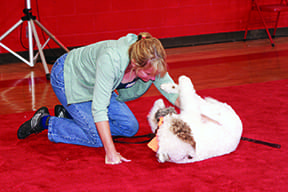
Photo by Stephanie Colman
288
BUILD A RELATIONSHIP
One of the biggest challenges for would-be positive obedience competitors is to create and maintain a dog who loves to work. One way to do this is by making sure you thoroughly invest in the relationship with your dog. Many reward-based trainers rely so heavily on dispensing treats and toys that it becomes difficult to tell if the dog is working for the tangible reward or the interaction with the handler.
Rewarding a dog is an interactive process, not a sterile act of dispensing a treat or offering a toy. Are you fully present in the relationship with your dog? Consider setting up a video camera to watch how you interact with your dog when you reward him with treats and toys. Are your treats accompanied by genuine praise? How often do pet your dog before or during treat delivery? Does your dog enjoy your petting? Do you genuinely appear to be enjoying yourself as you reward your dog, or do you deliver a treat as a matter of routine?
Try leaving your treats and toys in your training bag and keep your dog engaged simply by using your sparkling personality. Does your personality sparkle? Are you being genuine? Are you having fun? The relationship you share with your dog is the one reward you can bring into the ring. Aspire to build a relationship that has value; make sure your dog has a relationship with you and not the treats and toys you carry in your pocket when you train.
SHAPING FOR A LOVE OF THE GAME
Many reward-based trainers rely on treats and toys to help build a dog’s attention on the handler, coupled with various methods of “babysitting” his attention by springing into action with an unexpected move (like a lighthearted verbal cue) to recapture or maintain a dog’s focus during training. While arguably “nicer” than issuing a leash correction, it can be just a challenging to fade the motivational cheerleading as it is to fade food and toy rewards. That’s where shaping offers a unique advantage.
Fenzi regularly teaches students how to shape their dogs’ attention. With the dog on a leash, Fenzi instructs the student to allow the dog to disengage, but not to allow the dog to travel toward any distractions. The dog is free to “see” only what he can explore at the radius of the leash, and the handler should be positioned so that the dog can’t actually reach anything too exciting.
Further, the handler quietly moves behind the dog so as not to stand alongside him in distracted solidarity. The handler says nothing and simply waits for the magic moment when the dog turns toward her, at which point the desired behavior (paying attention to/looking at his handler) is marked, rewarded, and the dog is released back to his limited sight-seeing opportunity.
Rather than correct the dog for lack of attention, this technique requires the handler to be adept at limiting the dog’s ability to self-reward (by using a leash and working around a level of distraction that’s realistic for the dog) and willing to be genuine and interesting in his reward.
Over time, the dog is asked to to look at the handler and engage in increasing amounts of work. Throughout the process, the underlying lesson to the dog is, “If you choose to work for me (a task I, the handler, take responsibility for making fun), then you can continue to work. Walking off and sniffing isn’t an option.” The choice becomes working for the handler or doing nothing. When working has been reinforced with something truly rewarding and enjoyable to the dog, losing the opportunity to work becomes a powerful consequence.
Through a mix of shaping, the judicious use of lure-based techniques, management, exposing the dog to training pressure in ways that continue to promote success versus failure, and constant attention to building and preserving a solid relationship, Fenzi’s goal is to create a dog who learns that working is far more enjoyable than the very limited opportunities for self-reinforcement elsewhere. Over time, and with deliberately slow increases in distractions, the dog becomes so conditioned to working that even new and unusual distractions at show sites fail to seem more interesting.
STILL, SOMETIMES MISTAKES HAPPEN
People often incorrectly believe that in “positive training,” mistakes are never acknowledged. Dogs can benefit from information that tells the m their behavior is incorrect, but the information doesn’t need to be de-motivating, painful, or scary. It can be as simple as a do-over.
“I don’t use any pain-based techniques. Nor do I use techniques that are emotionally painful and make the dog cower, etc. I try very hard not to take the dog out of an enthusiastic place for playing the game, so yelling or anything that causes the dog to have concerns about me is off-limits.”
In a recent blog post, Fenzi writes about “correcting” her youngest dog Lyra during a stay exercise; the word is in quotes because no “correction” is used to address the dog’s mistake. In the accompanying video, Lyra breaks her sit-stay while awaiting a formal recall. Fenzi doesn’t ignore the behavior; instead, she cheerfully runs the dog back to the intended starting point and tries again. “Close but no cigar!” she exclaims.
“Just help the dog; it’s no big deal. Really,” Fenzi writes. “She won’t take over the world. She won’t think she’s ‘getting away with’ ignoring me. She will stay engaged in the game – and that’s the hardest thing to get back if you manage to lose it.” She re-sets and leaves her dog, returns to reward her at half the distance of the original attempt, and Lyra proceeds to execute a correct recall with bright eyes and a happy attitude. (See http://tinyurl.com/WDJ-lyra.)
Accepting that the dog won’t take over the world if his mistakes aren’t met with stern or forceful corrections can be difficult, especially when people have historically been taught that they must “win” all encounters with their dogs. Abandoning this mindset is an important step in creating a training and trialing experience that is joyful for both the dog and the handler. (After all, if given an effective choice, we’d like to believe that people would rather not employ force- and fear-based tactics when training their four-legged friends.)
KEEPING PERSPECTIVE
At the end of the day, it’s not about radically changing your training technique. “What has to change is the underlying philosophy. If that doesn’t change, you’re adding Band-Aids,” explains Fenzi. “Your belief of why you’re doing this with your dog has to change. Positive training is about making it work for both the dog and the human. It’s saying, ‘I have some competitive goals I’d like to reach, but first and foremost, I value you as a dog because I like you.’ It’s not about what he can do for you – it’s about what you are with the dog.”
Stephanie Colman is a writer and dog trainer in Los Angeles. She shares her life with two dogs, and actively competes in obedience and agility. See page 24 for contact information.


